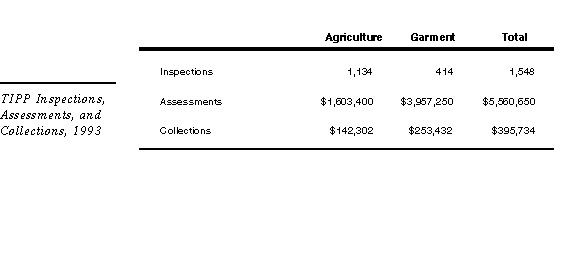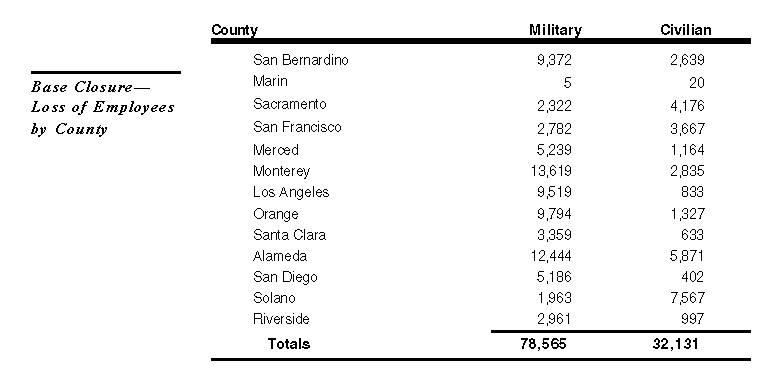
 Legislative Analyst's Office
Legislative Analyst's Office
There are a total of 63 major military bases in California. Twenty-two of these bases were designated to be closed under the first three rounds of closures (1988, 1991, and 1993). These base closures will result in a direct job loss of 110,696 jobs--78,565 military personnel and 32,131 civilian employees (the total number of employees when base closures were announced).
The figure below shows the direct job loss by county from the 22 bases to be closed.

The three rounds of military base closures (1988, 1991, and 1993) result in a direct job loss of 110,696 jobs--78,565 military personnel and 32,131 civilian employees (the total number of employees when base closures were announced).
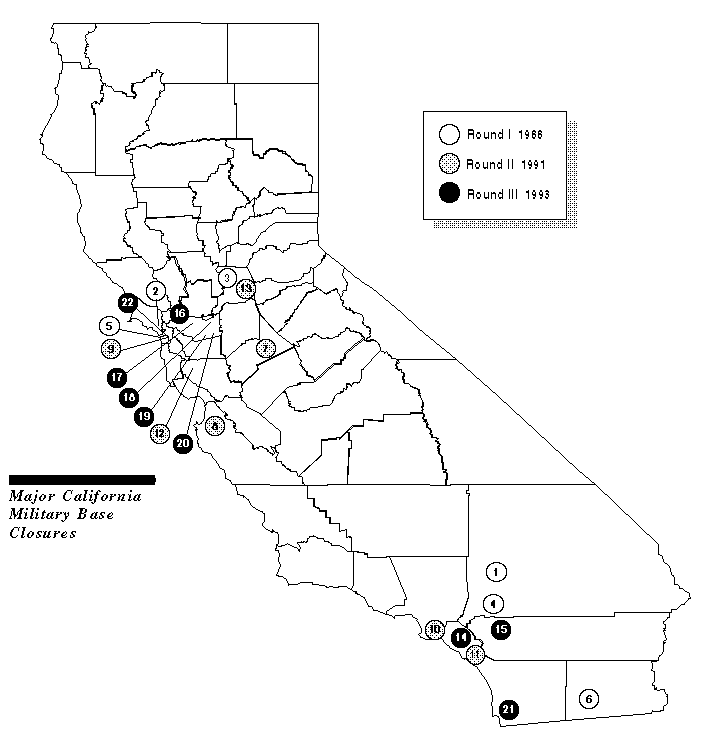
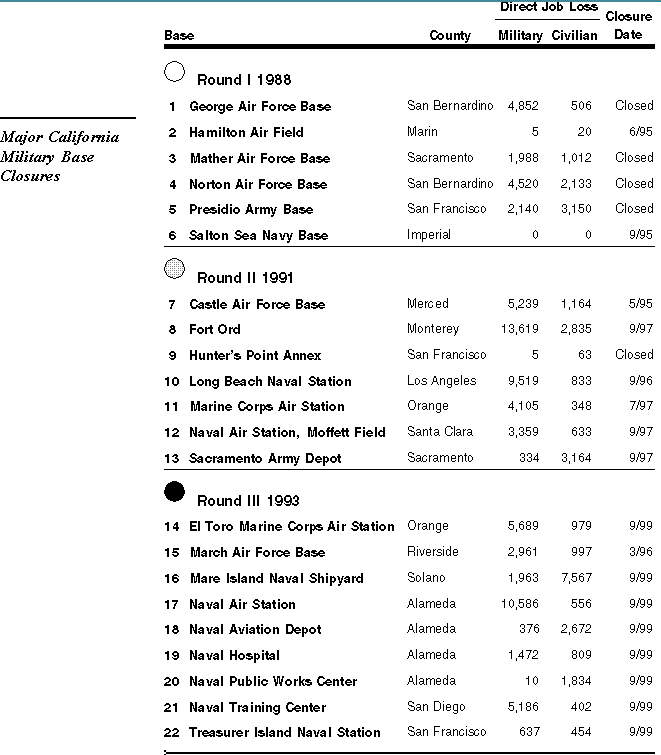
In February 1994, the Office of Management and Budget estimated that $21.6 billion would be made available over five federal fiscal years under the President's initiative for Defense Reinvestment and Conversion. The figure below shows the funding for various components of this initiative.
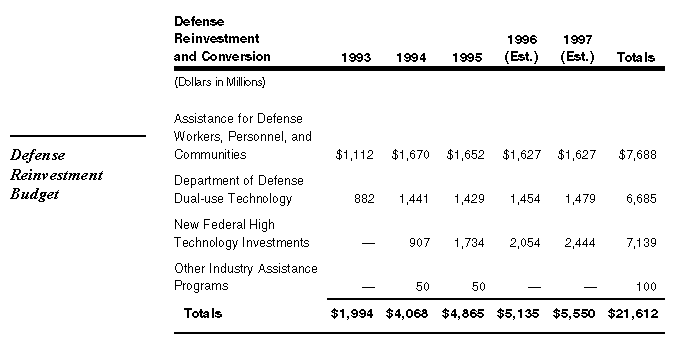
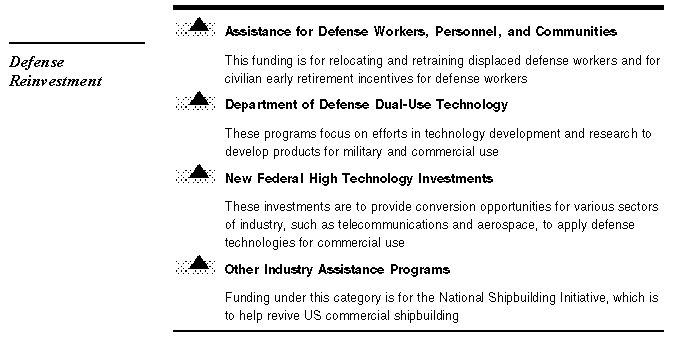
The Technology Reinvestment Project (TRP) is a major part of the Department of Defense's dual use technology programs under the Defense Reinvestment and Conversion Initiative. Under the five-year initiative, nearly $3 billion in federal funds is slated for the TRP. Emphasizing partnerships among industry, government and universities, the TRP reflects a strategy for integrating defense and commercial technologies. Under this program, up to 50 percent of an approved defense conversion project is funded with federal grant money.
Through October 1994 the TRP had approved $805 million in grants nationwide. Of this amount, $262.8 million or 33 percent involves partnerships with at least one California partner. Another round of grants, about $415 million in TRP grants, is expected to occur in June 1995.
To help California's defense conversion efforts, various state departments made over $50 million available for proposals that were submitted to the TRP for federal grants. The figure summarizes the state's participation in the TRP program through October 1994. Of the $50 million the state set aside, only $6.5 million was committed to projects approved for TRP grants.
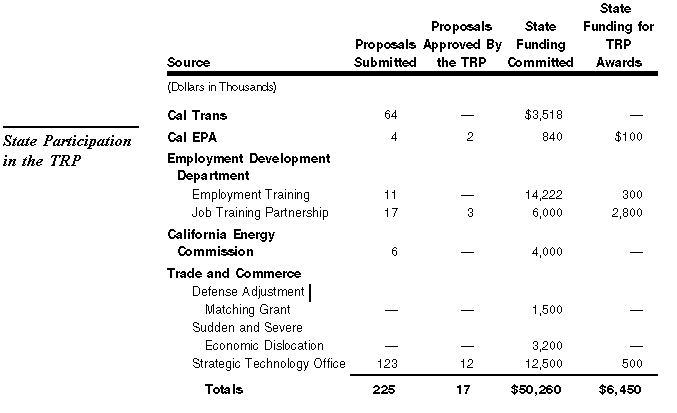
To help the state receive TRP grants and other defense conversion funding, the Legislature passed Ch 441/93 (SB 268, Roberti), which established the Defense Conversion Matching Grant Program. This program is administered by the Defense Conversion Council in the state Trade and Commerce Agency. The program objective is to coordinate the use of state funds in order to maximize and expedite the transfer of state and federal funding to state and local defense conversion projects. The program operates under a three-tiered project review system as illustrated below.
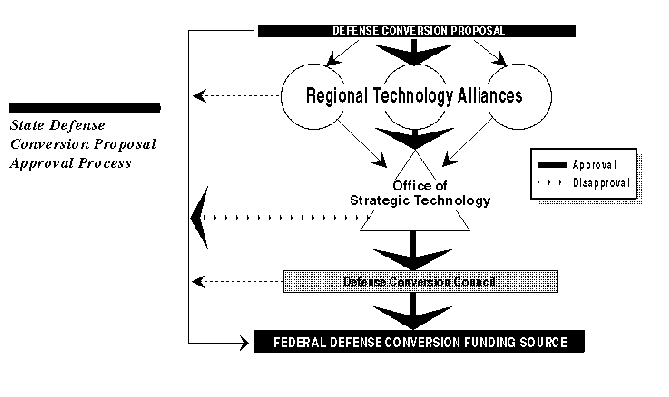
As the figure shows, a proposal may receive state and federal funding without approval from the Council, the OST, or the RTAs. The Council has the authority to recommend, but not require state funding commitments for defense conversion.
The Defense Conversion Matching Grant Program approved its first round of matching grants for submittal to the TRP. The Council approved 16 proposals committing a total of $4.5 million in state funding for the TRP competition. In October, the TRP approved 3 of these proposals involving $750,000 of the state funds.
The major features of the workers' compensation system in California are that it assigns employers liability without fault for workplace injuries, makes its compulsory for employers to provide workers' compensation insurance, creates a dispute-resolution mechanism, and provides a process for delivering benefits in resolved cases.
Employers in California are required to either purchase workers' compensation insurance coverage, or to self-insure their liability. In 1993, private-sector employers spent $9 billion on workers' compensation insurance premiums. It is estimated that self-insured employers spent $2 billion to cover their liability.
The various agencies and departments of the State of California are required to pay the workers' compensation bills for their employees. The State of California spent $270 million on workers' compensation costs in 1992-93, the most recent fiscal year for which data are available. This cost represented 3.4 percent of payroll in 1992-93.
Workers' compensation reform had the overall goal of reducing employer costs while guaranteeing workers prompt and fair assistance. The individual aspects of the reform are discussed below.
The Department of Industrial Relations (DIR) enforces the state's workplace health and safety, and wage and hour laws. A visible and prominent example of DIR's enforcement activity is the Targeted Inspection Partnership Program (TIPP).
Under the TIPP, the DIR and the U.S. Department of Labor coordinate their activities in order to provide comprehensive enforcement of minimum wage, workers' compensation, and workplace safety laws to the agriculture and garment manufacturing industries. Program inspectors investigate work places and cite employers who (1) violate state and federal wage and hour laws, (2) are not properly licensed, (3) do not have workers' compensation insurance, and/or (4) operate an unsafe workplace.
TIPP began operation in November 1992. It is funded from the Unpaid Wage Fund, which is the repository of funds collected from employers who did not pay minimum wage and/or overtime. Budgeted expenditures for the TIPP are about $900,000 in 1994-95.
As shown in the figure, the TIPP conducted 1,548 inspections in 1993. The inspections resulted in assessments against employers of $5.6 million, of which $395,734 was collected. The Franchise Tax Board assumed responsibility for TIPP collections beginning in the 1994- 95 fiscal year.
LABOR SAFETY AND ENFORCEMENT
Workers' Compensation Insures Workers Against Work-Related Injuries
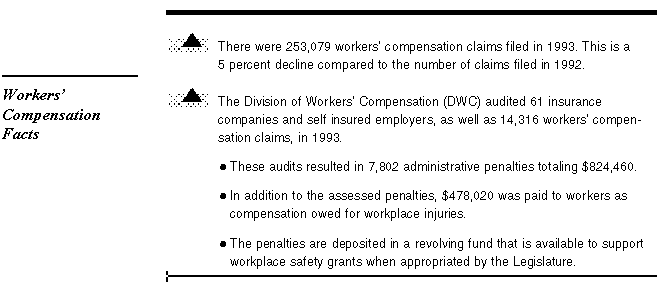
1993 Legislation Revamped the State's Workers' Compensation System
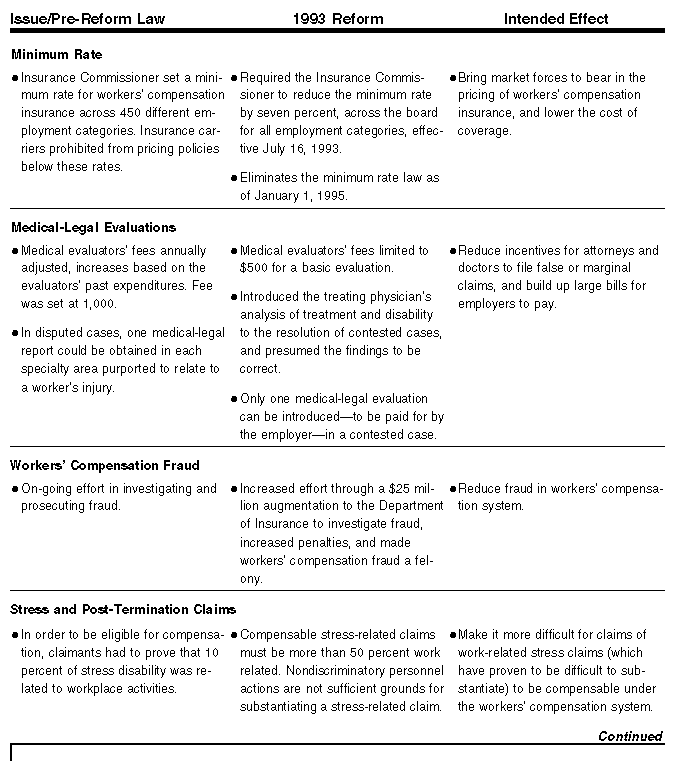
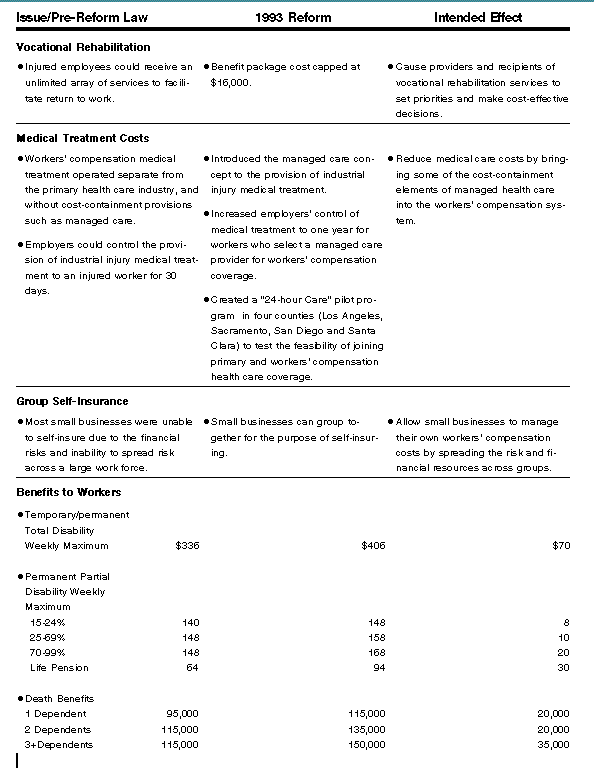
Targeted Inspection Partnership Program (TIPP)
